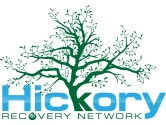Drug and alcohol abuse is bad for anyone, but the effects can be even worse for teenagers and young adults. The brain develops until about age 25. Drinking or using drugs while the brain is still developing can leave irreversible damage. If you’re concerned about your child using drugs, you aren’t alone. Nearly 10 million young people aged 12-29 may need substance abuse treatment, and more than 27% of high schoolers have used an illicit drug in the last year.
The Vulnerability of the Teenage Brain
Adolescence is the most crucial window for learning, as the brain is still malleable enough to quickly and effectively absorb new ideas. The teenage brain is going through significant developmental changes, and knowledge gained between 13-25 will remain in place for a lifetime.
The all-important frontal lobe of the brain, responsible for judgment, decision-making, self-control, and problem-solving, doesn’t fully mature until well after the teenage years are over. This is the primary reason teens are more likely to engage in risky behaviors, have difficulty controlling their emotions, and show poor judgment and higher rates of impulsivity. Teens have naturally lower dopamine levels, causing them to be bored more easily and seek thrills without weighing the consequences.
All of these factors create scenarios where drug use is likely to occur. However, there’s a difference in the damage to the brain between a once-or-twice use of illicit substances and ongoing drug abuse or drinking.
The Effects of Drugs on the Teenage Brain Development
When drugs enter the body, they’re delivered to the brain, interfering with normal processing. The function of neurotransmitters is compromised, and the natural levels of dopamine are artificially increased. The human brain is wired to associate activities that produce high dopamine levels with pleasure and great reward. Adolescents’ natural high desire to seek activities that offer pleasure (dopamine) may mean that they have a higher chance of repeated drug use and addiction.
The brain reaffirms choices that produce dopamine, ranking it as an important activity, remembering, and strengthening it. Unfortunately, the brain may also “prune back” other activities, ranking them as less essential. Since the reward circuits in the teenage brain are still developing, the ability of their brain to heal itself and realign activities is compromised.
Risks of Using Drugs for Teenagers
Long-term drinking and drug abuse in teens leads to trouble with attention, memory, coordination, and learning ability. Over time, abnormalities in the brain and a reduction in white matter quality occur. Consequences of this include trouble with spatial reasoning, executive function, and various cognitive tasks involving short-term memory.
Even casual drug use in the teenage years puts the individual at greater risk for developing substance abuse addiction. Addiction is a learned behavior, and the adolescent brain imprints this learned behavior more readily than an adult’s.
There is Hope
If you have a teenager who is drinking or using drugs, there is hope, especially if their addiction is mild to moderate. According to the National Institute on Drug Abuse, “When substance use disorders are identified and treated in adolescence, especially if they are mild or moderate, they frequently give way to abstinence from drugs with no further problems.”
Hickory Treatment Centers can help. We have special addiction programs designed for the unique needs of adolescents and offer safe, professional, and compassionate treatment for drug and alcohol addiction.

